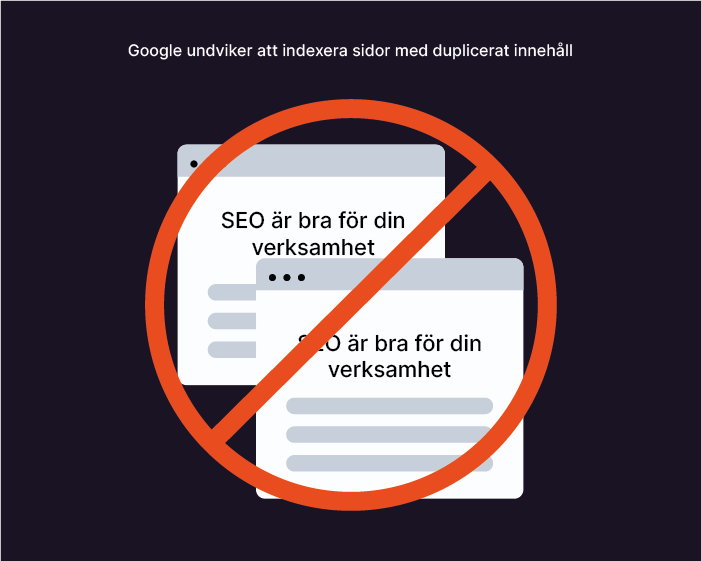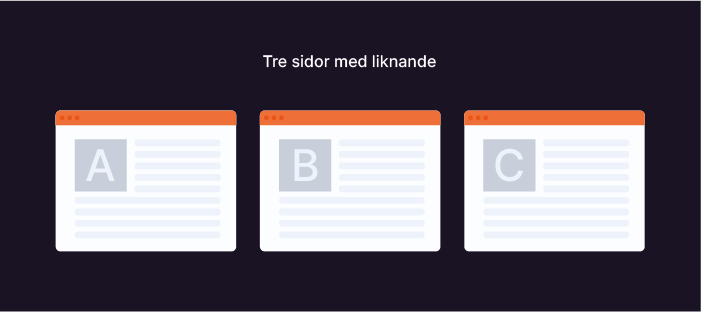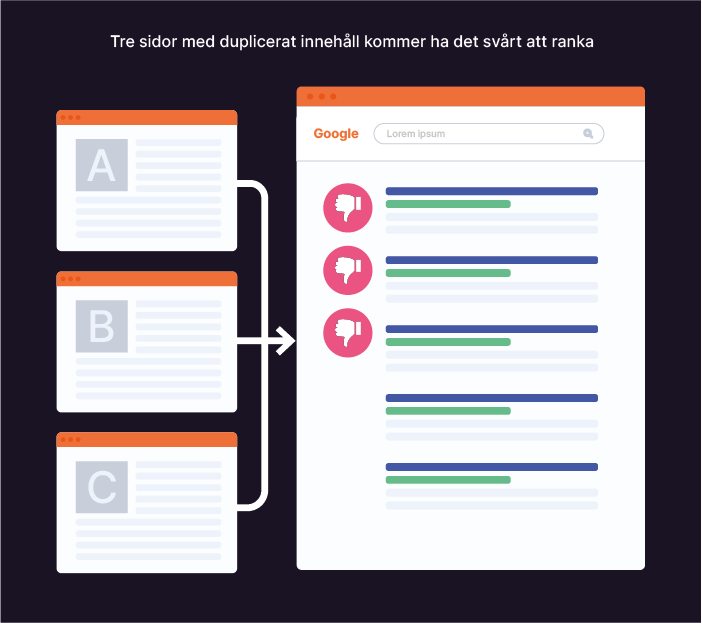
Duplicate content refers to material that appears on multiple pages on the internet, either within a single website or across several websites. Duplicate content can have a negative impact on search engine optimization (SEO) and may lead to lower search engine rankings.
Duplicate content is content that appears multiple times—different variations of the same text, or outright copied material.Duplicate content can be intentional (e.g., copying content from another website). In other words, plagiarism, which is not good because it reduces your website’s authority.

But it can also occur unintentionally. What happens then is that Google detects similarities in meaning and wording, and therefore classifies the content as plagiarism or duplicate content.

However, duplicate content does not only refer to text.Duplicate content can, for example, be different URLs pointing to the same page, or having multiple web address
Duplicate content can be problematic for several reasons. First, search engines may struggle to determine which page should rank for a specific search query. This can result in a decrease or downgrade in search rankings for all your pages with duplicate content.
In addition, duplicate content can undermine the authority and relevance of your website’s material. If search engines see the same content across multiple pages, they may not know which page should be considered the “canonical” version of the content. This can cause confusion and lead to a drop in search rankings. By “canonical,” we mean the page that search engines should prioritize over other pages with similar or identical content.

Duplicate content has a negative impact on your SEO efforts and therefore requires attention and ongoing work. If you understand what causes duplicate content, you can be more proactive in how you solve these issues.
Google does not want to index or rank anything that has been copied from other websites.Imagine, for example, that you have 3 different pages with content that is very similar to one another.

Google will then not know which of these is the original page, which can result in the page not being indexed or being lowered in the rankings.

Sometimes you may encounter a challenge when your website exists in several different versions. As a rule, all searches for the domain should be redirected to one and the same domain.
What can happen is that your URL called "example.com" is not the same as "www.example.com". Make it a rule to check this, since you don’t want Google to interpret your website as a duplicate of itself.

What happens more often is that you have one page but several URLs pointing to it. This is common in e-commerce or similar setups where each product may be available in several different colors and therefore technically exists on the same page.

You don’t want your product pages or service pages to be classified as duplicate content of each other and therefore not perform well in the SERPs.

To fix this and stay ahead in your SEO work, you can use something called “canonical parameters.”What the canonical parameter does is tell Google and other search engines that your canonical page is the one that should be prioritized, and the others, the duplicates, are just variations of it. This way, Google will know how to prioritize your pages and therefore how to rank them.
To perform well in rankings and the SERPs, you need to actively work on your SEO. You need to create more value than your competitors and present it in a better way. Analyze the content, structure, websites, and other information about your competitors’ pages. This will give you a clear action plan for your to-do list.
Below are some tips on how to deal with duplicate content and optimize your site:
Unique and valuable content will always weigh the heaviest when it comes to avoiding duplicate content. Make sure to create content that is current and relevant for your target audience. What you can do is look at your competitors’ content and analyze it. Ask yourself the following questions:
Using 301 redirects is the smoothest way to get rid of duplicate content issues on your website.
In theory, what you’re doing is telling Google or other search engines that this page no longer exists, go to this one instead.
In practice, this can be done either by using a WordPress plugin, such as AIOSEO. But of course, you can also do it with code.
Make sure to include this in your <head> tag on the page.

If you don’t want to use 301 redirects, you can of course simply choose to delete the page entirely.
When you have multiple URLs for the same page, you want to tell the search engines which one should be prioritized. This is where canonical tags play an important role—they tell search engines which page is the primary one and which ones are just alternatives to it.
To set up canonical tags, you can use plugins like AIOSEO or Yoast. These tools make the job easier for you and automatically add the tags.
If you prefer to add the tags yourself, you can do so by writing the following code in the <head> tag.

After you’ve gone through your indexed pages, identified the ones that are underperforming, and figured out which pages qualify as duplicate content, you can do one of the following:
You can follow the steps below to prevent and manage duplicate content on your website, and then evaluate afterward.
Duplicate content can have negative effects on search engine rankings and can dilute the authority and relevance of a website. To avoid these issues, it’s important to identify and fix cases of duplicate content on your site. Use duplicate checkers, Google Search Console, and manual reviews to identify duplicate content. Remove or consolidate duplicate content, use canonicals, and avoid plagiarized material to resolve duplicate content problems.